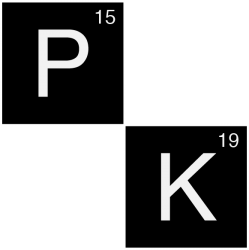“Drug biotransformation, generally into more polar compounds readily excreted from the body through urine or feces”
Description
By definition, a drug administered intravenously undergoes immediate and complete absorption. By contrast, drugs administered extravascularly need to be carried through various barriers in order to be able to reach the blood circulation and then their site of action.
Metabolic biotransformations can occur between absorption of the drug into the general circulation and its excretion. Metabolic products are often less active pharmacodynamically than the parent drug and may even be inactive. However, some metabolites have enhanced activity or toxic properties.
The most widely employed extravascular route of administration is the oral route. In this case, the drug first reaches the stomach where it usually disintegrates and dissolves in the gastric lumen. It is then evacuated in the small intestine. Because of its permeability, large surface area and high blood flow, the small intestine is the primary site for absorption. Therefore, gastric emptying is an important factor influencing the rate of drug absorption. Foods, especially fat, can slow gastric emptying. Absorption can be limited by the short transit period of the drug through the small intestine (2-4 hours). Colon is usually a poor site of absorption due to its low permeability and relatively low surface area. Nevertheless, some drugs are absorbed at this site because of the long period of transit (24-48 hours).
Drug metabolism usually occurs in the liver, but occasionally can take place in the gastrointestinal tract, lungs, kidneys, skin or plasma.
Two phases in metabolism are classically recognized:
- Phase I: Transformation of drug into a more polar metabolite by introducing or unmasking a functional group (e.g. oxidation, reduction or hydrolysis). Oxidation reactions are often catalyzed by a member of the cytochrome P450 family. These enzymes are mostly located in the endoplasmic reticulum of the hepatocytes (microsomial enzymes).
- Phase II: Combination of a glucuronic acid, sulfuric acid, acetic acid or amino acid with a functional group to form a polar conjugate that can be readily excreted in urine or feces. The enzymes catalyzing these reactions are mostly located in the cytosol of the hepatocytes.
These two phases often occur sequentially: phase I oxidation prepares a functional radical enabling the conjugation with a polar compound.
Clinical implications
Metabolic reactions widely vary from one individual to another, and consequently affect the dose and frequency of administration required to achieve effective and safe drug levels in the organism. Genetic polymorphism accounts for some of the differences observed. Other important factors determining metabolism are age, diet, environmental factors, drug-drug interactions and diseases affecting metabolism (e.g. acute or chronic liver, cardiac or renal disorders).
Related terms
Enzyme induction: Acceleration of metabolism by increase of enzyme expression. Various substrates appear to induce metabolism, such as certain drugs and environmental pollutants. Induction decreases the pharmacological action of the substrate of the enzyme, including frequently the inducer. Sometimes, the enhanced amount of metabolites can increase toxicity or carcinogenicity.
Enzyme inhibition: Competitive blockade or inactivation of the enzyme by a substance, which may or may not be a substrate. The inhibition increases concentrations of the parent drug, and thus exaggerates and prolongs its pharmacological effects. For prodrugs, inhibition may decrease the pharmacological response.
Hepatic first pass effect: All drug dose absorbed from the gastrointestinal tract is first delivered to the liver by the portal vein. A fraction of the drug can then be metabolized in the liver before it even reaches the systemic circulation. Therefore the oral bioavailability of the drug is reduced.

